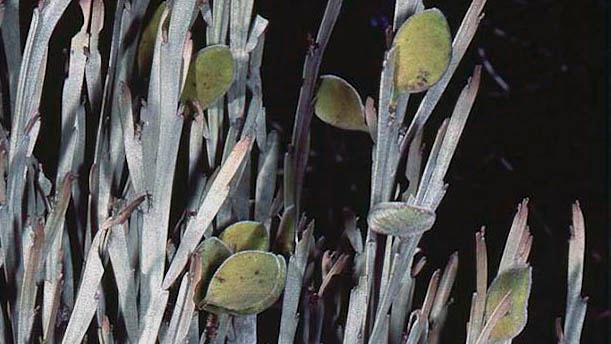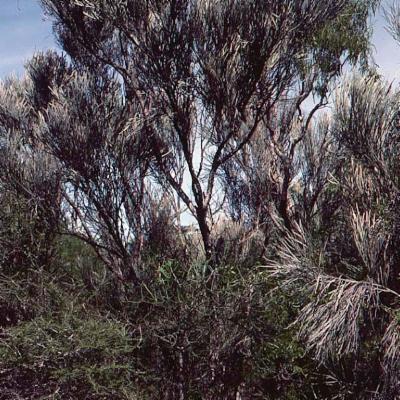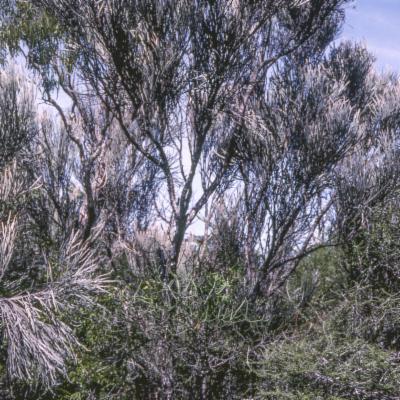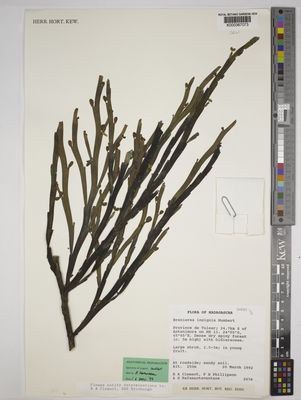Geography and distribution
Restricted to southern and south-western Madagascar, where it has been found in two main areas:
the Onilahy River basin and around Betioky (particularly near Ambatry)the Menarandra River to the lower basin of the Mandrare River.
It is recorded as being frequent in disturbed woodland in Toliara (19 km south of Betioky). It has been found at up to 300 m above sea level.
Description
Overview: A shrub or small tree, measuring 6-8 m tall, Brenierea insignis has an unusual growth habit with very reduced leaves, and flattened, silvery-grey stems, which are covered in small, colourless scales. The flattened stems (cladodes) branch in a coral-like pattern.
Flowers: The flowers are creamy yellow or whitish, 4-5 mm long and are held in erect racemes of about 10-20 flowers. The flowers have a 5-toothed, bell-shaped calyx with five petaloid staminodes and five protruding fertile stamens.
Fruits: The fruit is a flattened, discoid pod of 17-22 x 13-16 mm with a velvety covering of hairs. The pod splits into two valves containing one or two seeds. The seeds are flat, dark brown, glossy and about 8-12 x 6-9 mm.
Threats and conservation
The major threats to Madagascar spiny thickets are the harvesting of wood for firewood and charcoal production, together with clearing for agriculture and grazing by domestic animals (primarily cattle and goats). It is estimated that the south-western dry spiny forest-thicket has been reduced in area by approximately 30% since the 1970s.
There are no known conservation measures specifically for Brenierea insignis , but it does grow in some protected areas, including the Andohahela National Park.
Brenierea insignis is generally described as common within its natural range. The population is currently believed to be stable and no major threats are known at present, and so the species has been rated as of Least Concern (LC).
Conservation assessments carried out by Kew
Brenierea insignis is being monitored as part of the 'Sampled Red List Index' project, which aims to produce conservation assessments for a representative sample of the world's plant species.
This information will then be used to monitor trends in extinction risk and help focus conservation efforts where they are needed most.
This species at Kew
Pressed and dried specimens of Brenierea insignis are held in Kew's Herbarium, where they are available to researchers by appointment. The details, including an image, of one of these specimens can be seen online in Kew's Herbarium Catalogue.
View details and image of specimen







